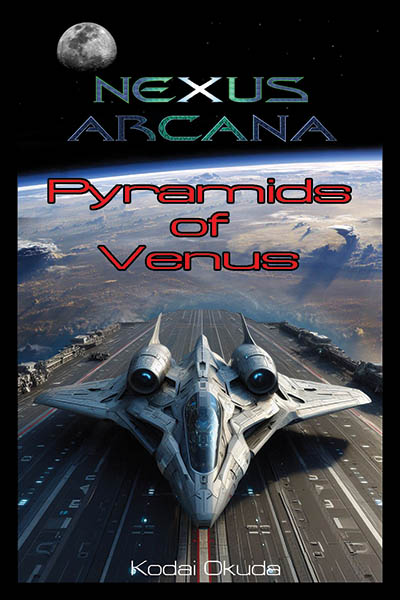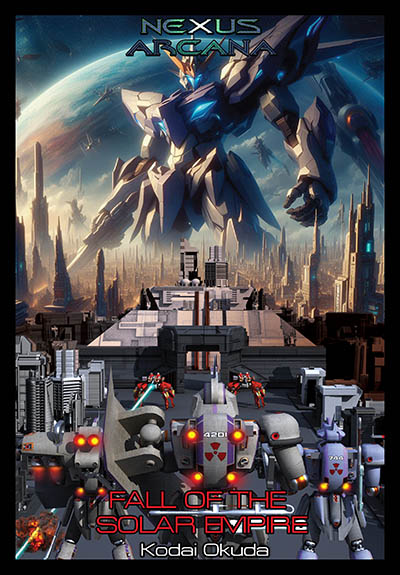Jhararo's All the Galaxy's Warships Vol. 4: Spacecraft Design Concepts (part 1)
by , 05-05-2012 at 08:15 PM (813793 Views)
Welcome to the April issue of Jhararo's All the Galaxy's Warships, the digital database dedicated to the study of mechanical devices, weapons, vehicles, and other machines of the known galactic nations.
This Month's Issue: PART 1 of a general overview of spacecraft design concepts of the 1st Interplanetary War era.
* * *
INTRODUCTION TO PART 1
This issue will be the first installment in a six part series dealing with each design-concept type of spacecraft used during the 1st Interplanetary War period. The first installment will simply be a general overview of all the design types and explains briefly what lead up to the spacecraft design types of the 1st Interplanetary War era.
* * *
Great War Era designs
The decade prior to the 1st Interplanetary War saw a technological change that was unprecedented in the design concepts of spacecraft. This change started at the end of the Great War and continued on well into the 1st Interplanetary War.
For much of the 2040s and 2050s, simplistic assault shuttles and cargo ships fought in the space battles of both the United States Space Navy and the United Nations Space Corps. The vessels that comprised the space forces of both powers were a culmination of the spacecraft developed during the late 20th century and early 21st. However, as the Great War came to a close in the late 2050s both the USSN and UNSC started to realize that their existing fleets were based on old concepts about spacecraft design that did not meet the real-world military requirements learned from the experience of the space battles of the 2050s.
* * *
The USSN's Bold Move to Survive; The First Leap Forward
The first major change in the design concepts of spacecraft started in 2059 with the introduction of the USSN Type-59 corvette.
The Type-59 incorporated the primary design features of the previous main USSN space warship, the Kentucky Class assault shuttle.
The main differences between the two vessels were the size of the Type-59 (900 tons), the weapons (turreted beam and internal torpedo tubes), defense systems (nuclear dampeners), the armor, and the speed/range of the vessel.
No craft prior to the Type-59 had been based on traditional ocean/surface ship military combat tactics and strategy. The Type-59 was built souly to act in the old wet-navy role of corvette/escort for larger warships the USSN intended to build to both defend themselves against UN attack and to launch a counteroffensive to retake the Earth sphere.
Unbeknownst to the USSN military designers of the day (2058-2063 AD) they were creating what would become a paradigm shift in spacecraft design and development.
The two subsequent spacecraft built by the USSN in 2059 were the Juno Class frigate and Saturn Class heavy frigate.
Not only did the USSN give them traditional wet-navy designations as frigates, but they also built these craft with the intention of landing them in water on Earth since the mission of these craft included excursions to the ruined surface of the planet for various military operations (mostly to collect water for purification and use).
It was these "Space Cruiser" types that lead to the development of the Earth Federal Republics fleet of vessels which were based almost entirely on the old USSN fleet of the 2060s.
* * *
The UN responds; Second Major Leap
When the USSN's new space navy launched its assault on the Solar Empire's asteroid and planetoid bases in 2060, the UNSC was taken completely off guard. They had nothing with which to combat the new "Space Cruisers," as they called them, and calls for upgrade of their existing fleet rang out through the halls of the Soviet council chambers.
Fortunately for the USSN, these calls fell on the decadent and somewhat deaf ears of the Soviet Supreme council. The Supreme Soviets argued that since the USSN lacked the numbers to be of any great threat, and it was clear the USSN goal was to rebuild Earth, they saw no need to expend vast resources and manpower to construct any considerable number of large-scale warships.
The defense of the Earth Sphere was not a task the Solar Empire elite was interested in embarking on, since they reasoned that they would allow the USSN to rebuild the planet and then return to take it for themselves once the task was complete.
However, the Supreme Soviet Council did allow for the research and development of a new fleet of warships with limited production of prototypes in the event that somehow the USSN became more than just an annoyance.
From this decree the first "Ironclad" design concept vessels were produced in small numbers to contain the USSN.
This first fleet of "Project Ironclad" vessels was built in 2061 and was comprised of the Petya Class escorts, Boikii Class destroyers, and Borodino class cruisers. The major difference between the 1st Interplanetary War production models of these ships and their 2060s predecessors were the lower technology of most of their systems and the lack of any energy shields or PHELAC weaponry.
Old wet-navy warship designations were still retained for ease of identification by the proletarian crews that would man them.
The design of these three vessels would set the stage for the considerably larger, and more powerful Ironclad type vessels later built during the 1st Interplanetary War and the first real "space battleship" built by men of Earth.
* * *
The UNSC Conspirators React to the Ironclads; Third Major Leap
The news of the Ironclad fleet spread quickly within the intelligence communities of both the USSN and the UNSC. With the growing number of malcontents rising within the ranks of the old UNSC command staff and proletarian population during the early 2060s, the men and women who had hatched the plot to overthrow the Solar Empire elite quickly realized they had to do something to counter the vessels of "Project Ironclad."
It was during the early-2060s that the UNSC Jupiter bases had their personnel quickly replaced with those loyal to the cause of the revolutionaries that sought to unseat the Marxists. Therefore, by the summer of 2065 the conspirators had a fully operation squadron of twenty SDD-65 Richtoven Class space destroyers crewed and operational.
This design was a complete departure from the Ironclad types designed by the UNSC and were more akin to the USSN Type-59 corvette. However, the major differences between the design concept of the Richtoven and Type-59 were the placement of the bridge (nose section), size of the vessel (8000 tons), addition of a vehicle hangar (for battlerobots and fighters), and the introduction of "Ion Torpedoes" (space torpedo that uses an Ion engine).
The Richtoven class was refit in 2068, after three years of production and 400 ships built, with the then new Type-2 Intersection Drive system. This made Richtoven the first mass produced class of vessel to have an FTL drive as its main propulsion.
The design team of the Richtoven dubbed this type of craft the "Flash Gordon" type due to its resemblance to the old 1930s Sci-Fi spaceships from the serial films.
As news of the existence of the alien fleet came to the attention of the conspirators, it became clear that they needed to upscale their plans for a space force that could deal not only with the Solar Empire Ironclads but also with a potential alien threat should one present itself.
* * *
Conclusion of Part 1
From these three "leaps" came the four basic designations for spacecraft types built by the Earth powers, and the one designation used to describe the alien craft found at Alpha Centauri.
These design designations are as follows:
1) "Space Cruiser type" USSN/EFR style spacecraft.
2) "Ironclad type" UNSC/Solar Empire style spacecraft.
3) "Flash Gordon type" Ceres style spacecraft.
4) "Cosmo Navy type" Union of Solar Republic style of spacecraft (described in a later issue)
5) "Space Fortress type" Prodono Republic style of spacecraft (described in a later issue)








 Email Blog Entry
Email Blog Entry

